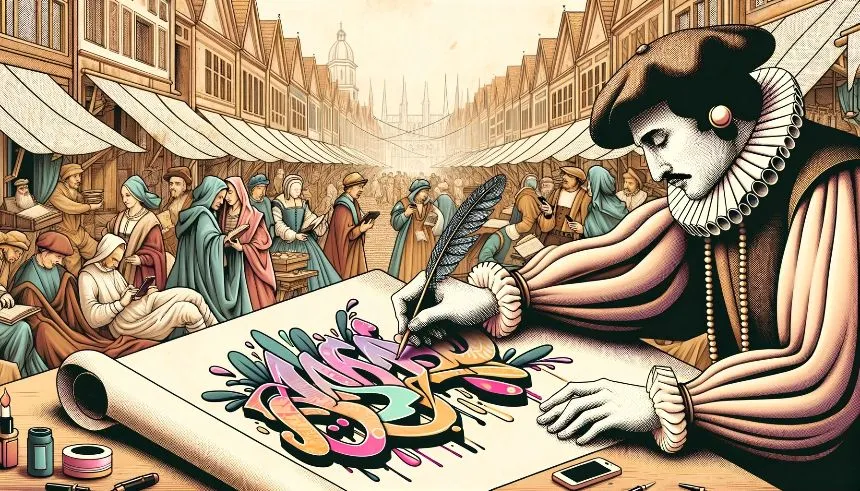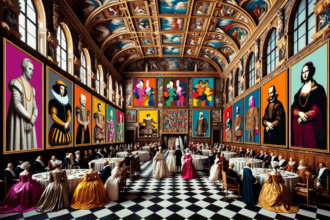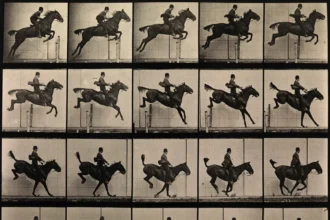Street art’s evolution is profound. It’s more than just aesthetics. It carries messages, voices, and resistance. Some may walk past a mural, while others see a call to action or a critique. In cities like Bogotá and Berlin, artists do more than decorate; they communicate and challenge.
Street art’s shift from vandalism to protest is significant, showcasing pop art’s power. This change elevates it to a form of political expression. The line between rebellion and mainstream blurs as artists become activists. This examination considers street art’s political impact and its global resonance.
The Urban Canvas: A Voice for the Voiceless
In the heart of global cities, buildings become canvases. These aren’t just splashes of color or intricate designs. They embody the heartbeats of their communities, echoing the joys, sorrows, and struggles they experience.
Street art, in its essence, represents an unfiltered voice. From the Black Lives Matter movement in the United States to pro-democracy protests in Hong Kong, artists capture moments in paint. These artworks chronicle histories, sometimes going against official narratives. They represent truths that some would prefer stay hidden.
However, it’s not always about large movements. Often, these paintings touch on localized issues. Gentrification, housing rights, and social inequality frequently appear. Artists give voice to topics that might otherwise go unheard in the clamor of urban life. The art serves as both a beacon and a mirror, highlighting the beauty and blemishes of society.
Yet, while street art speaks volumes, it’s often at risk. Authorities may see it as defacement, not expression. Artists risk fines, arrests, or worse. But this threat often amplifies the message. The very act of painting becomes defiance, a testament to the power of voice.
Masters of the Spray Can: Artists as Activists
The leap from artist to activist is not far. Many street artists navigate this journey with grace. They wield their tools, be it spray cans or stencils, as instruments of change. Their intent goes beyond aesthetic pleasure. It’s about instigating thought, questioning the status quo, and demanding attention.
Consider the elusive Banksy. Beyond his mysterious persona, his works tackle social and political issues head-on. From highlighting refugee crises to critiquing consumer culture, Banksy’s murals are thought-provoking. They often emerge overnight, catching cities off guard, and sparking immediate conversations.
Similarly, Shepard Fairey’s “Obey” campaign became iconic. Starting as an experiment, it grew into a movement. Its intent was clear: question obedience and conformity. Through art, Fairey ignited a dialogue on societal structures and their influence.
These artists, among countless others, push boundaries. Their works often reside in legal gray areas. However, this doesn’t deter them. If anything, the possibility of their art being temporary adds urgency. The public must engage now, for the piece might not exist tomorrow.
The role of these artists is crucial. They don’t merely beautify urban spaces. They challenge, provoke, and inspire. Their works are calls to action, pushing the public to engage, think, and, at times, revolt. In the process, they redefine the boundaries of art and activism, proving the two can seamlessly coexist.
The Global Impact: From Walls to World Stage
Street art transcends boundaries. What begins on a neighborhood wall can resonate across the globe. Thanks to social media and digital platforms, a mural painted in Brazil might inspire activists in Thailand or artists in France.
In recent years, this art form’s global nature has become undeniable. Events like the Syrian civil war have been depicted on walls in distant cities. These images evoke empathy and unite people in solidarity. The message is clear: our shared humanity surpasses geographical borders.
Yet, the art’s reach has consequences. As street art gains international recognition, commercialization follows. Murals become monetized, sometimes clashing with the artist’s original intent. This raises questions about the art’s purity and purpose.
However, many artists harness this global platform positively. By collaborating across cultures, they foster understanding. Joint projects highlight shared values and dreams. These endeavors break stereotypes, promote unity, and challenge divisive narratives.
In a world increasingly interconnected, street art plays a pivotal role. It narrates stories, stirs emotions, and bridges divides. Through its global impact, it’s not just about painting walls, but uniting worlds.
Ephemeral Yet Eternal: The Legacy of Street Art
The nature of street art is transient. Rain fades it, authorities erase it, and new buildings might overshadow it. But while the paint may vanish, the impact lingers. The conversations it starts, the emotions it evokes, and the societal changes it prompts ensure its legacy.
Look at the Berlin Wall. While the concrete has been torn down, its graffiti remains symbolic. Those vibrant sketches and messages captured a period of division and hope. They live on in photos, memories, and history books.
This longevity is seen globally. Art hubs like Miami’s Wynwood Walls have transformed districts. What was once a rundown area now thrives, drawing tourists and artists alike. The art’s influence goes beyond the visual. It boosts economies, renews communities, and shifts perceptions.
Yet, with this legacy comes responsibility. As street art garners respect, artists must remain authentic. The allure of commercial gains can divert from the art’s core message. Balancing integrity with influence is the challenge of modern street artists.
Street Art’s Resounding Echo
In the urban landscapes of our world, street art has risen as an unequivocal testament to the power of expression. It’s no longer confined to the realms of aesthetics; it’s a resonant voice, an emblem of resistance, and a window into the heartbeat of our communities. What once might have been seen as mere decoration now serves as a canvas for challenging societal norms and igniting profound dialogues.
The transformation of street art from an act of rebellion to a legitimate form of political expression has been seismic. As the lines between artist and activist blur, the streets become a battleground of ideas, a platform for questioning authority, and a call to action. Banksy’s enigmatic pieces challenge us to ponder the refugee crises, while Shepard Fairey’s “Obey” campaign beckons us to question conformity. These artists, among many, redefine the boundaries of art and activism, proving that creativity can be a potent catalyst for change.
Street art’s impact knows no borders. Thanks to the digital age, a mural painted in one corner of the world can inspire, provoke, and unite people continents away. It becomes a symbol of shared humanity that transcends geographical boundaries. Yet, as street art gains international recognition, it grapples with the commercialization that can dilute its essence. The delicate balance between purity of intent and the allure of profit poses a continuous challenge.
Nevertheless, artists are harnessing this global platform for positive change. Collaborations across cultures foster understanding, break stereotypes, and challenge divisive narratives. In our increasingly interconnected world, street art stands as a bridge, narrating stories, stirring emotions, and fostering unity.
The transient nature of street art may mean the paint fades, but its legacy endures. The conversations it initiates, the emotions it evokes, and the societal changes it prompts ensure its place in history. The Berlin Wall may have crumbled, but its graffiti remains an enduring symbol of division and hope, a testament to the power of human expression.
As street art garners respect, artists bear the responsibility to maintain authenticity amidst the allure of commercial gains. Balancing integrity with influence becomes the contemporary challenge for these modern-day creators.
In the grand tapestry of art and activism, street art has woven itself as a vibrant thread, challenging, provoking, inspiring, and ultimately uniting our world in colors, stories, and emotions that continue to echo through time.









